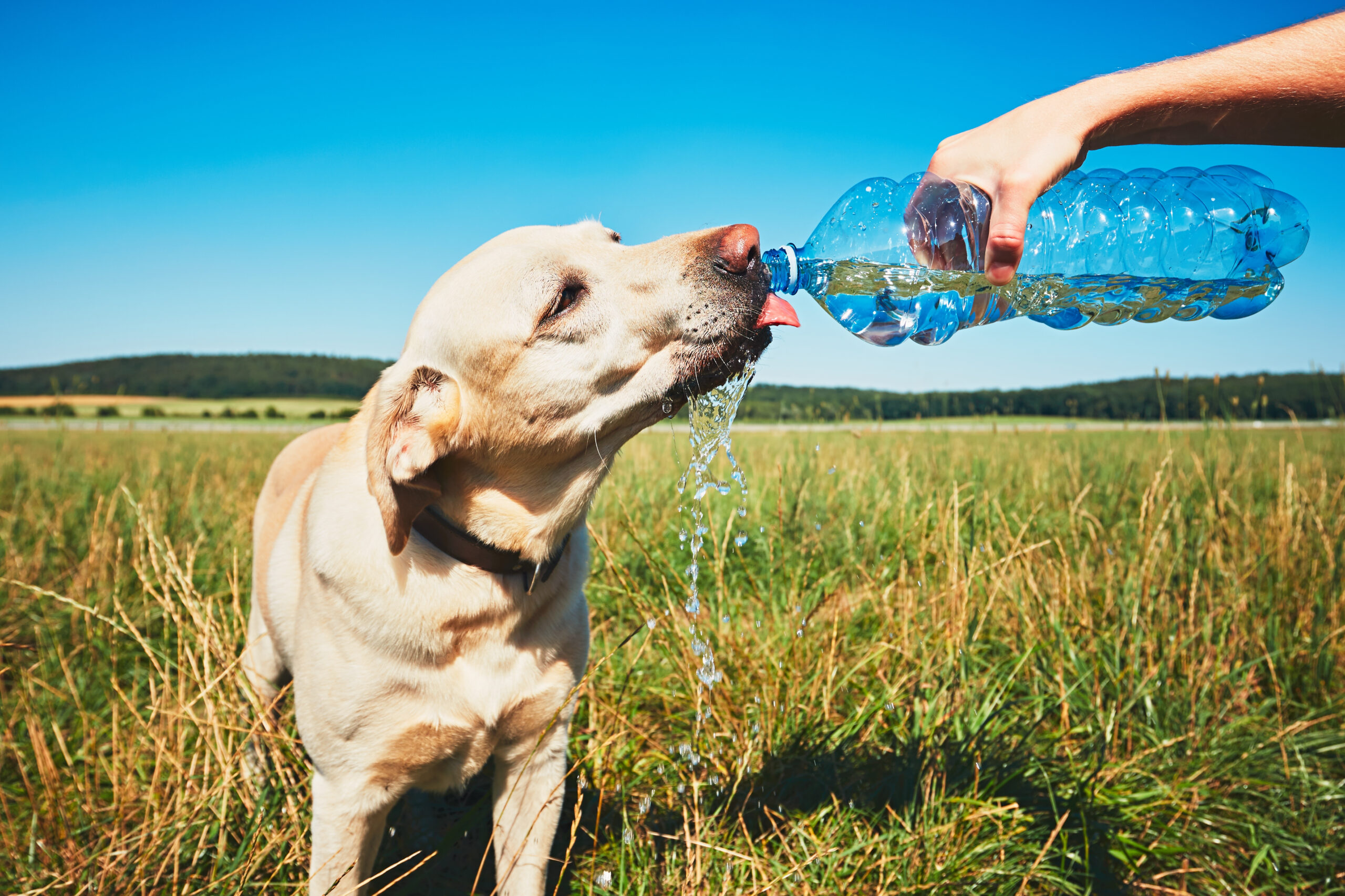Heat Exhaustion – How to Avoid it & Warning Signs

Your adventure companion is eager to get outside and explore all warm weather has to offer. But as we get into summer and temperatures start to rise, it’s important to keep an eye on your dog and their temperature.
Your dog’s normal body temperature is between 101°F and 102.5°F. When they go out in the heat and exert themselves, their body temperature rises. But, unlike us, they do not have sweat glands. Without the ability to perspire, dogs rely on panting to cool themselves and restore their normal body temperature.
Understanding Heat Exhaustion
When body temperature rises it is commonly known as a fever. The difference between fever and heat exhaustion is that one is a natural physiological response to an internal stressor like an infection versus an external stressor like heat.
Heat exhaustion occurs as a response to a dog’s temperature hitting between 103°F and 105°F. Heat stroke occurs at 106°F. Noting the early signs of heat exhaustion can help protect your pup from reaching a state of heat stroke and collapsing.
Some dogs are more likely to struggle with heat exhaustion than others. Dogs that are extremely active, have thick fur, or a small snout often get hotter and have a more difficult time naturally cooling off than others. That makes them more susceptible to heat exhaustion.
Addressing Your Dog’s Heat Exhaustion
One of the earliest and most obvious ways dogs communicate they’re overheated is through their responsiveness. If your dog is panting and not responding to your command, they may be in the early stages of heat exhaustion.
Common signs of heat exhaustion are panting, dehydration, excessive drooling, bright red tongue, and a rapid or irregular heart beat. If you notice these things you need to help them cool down. If the temperature is close to your dog’s body temperature it will not help your dog cool. They will be panting, breathing in air that they need to cool them, but that air will be too warm to do it.
You can help your dog cool off by putting them in a cool bath or running cool water over them. After that, a fan can help cool off their skin and regulate their body temperature. Dogs going through heat exhaustion are usually dehydrated so make sure they have cool water to drink. Regaining proper hydration is vital to your dog’s recovery.
Avoiding Heat Stroke
If your dog’s heat exhaustion goes unaddressed their temperature will continue to rise and they will experience heat stroke. The majority of cases of heat stroke are caused by owner inattention. Only half of cases of heat stroke survive. Addressing heat exhaustion early will minimize your dog’s chances of reaching heat stroke and suffering severely.
To help your dog avoid heat stroke, make sure they have everything they need to stay cool on the hot days of summer. Access to cool water and shade will give your dog what they need to stay cool for a short period of time in the heat. The best thing you can do is to be sensitive to your dog’s temperature. Monitor your dog’s exercise by taking them for walks in the early morning or evening to avoid overheating. And bring them inside during the hottest parts of the day.
It also helps to avoid places that are excessively hot. Dogs’ minimal ability to perspire exists in their paws. Walking on hot surfaces such as sand and asphalt can present a challenge for your dog to remain cool.
At any point if your dog’s temperature reaches 104°F seek veterinary assistance. Your vet can help your dog recover and make sure they don’t face any lasting complications.
Black Gold Explorer is about fueling and supporting your dog to unleash adventure. We know you and your pup have great things planned for the warmer weather. Stay cool and enjoy the best days ahead.
